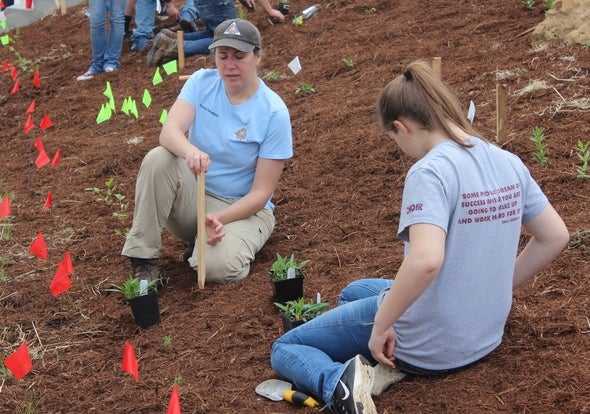
Xplor reconnects kids to nature and helps them find adventure in their own backyard. Free to residents of Missouri.


































Stay in Touch with MDC news, newsletters, events, and manage your subscription

Xplor reconnects kids to nature and helps them find adventure in their own backyard. Free to residents of Missouri.

A monthly publication about conservation in Missouri. Started in 1938, the printed magazine is free to residents of Missouri.


MANSFIELD, Mo. – “All along the road the wild larkspur was blossoming pink and blue and white, birds balanced on yellow plumes of goldenrod, and butterflies were fluttering.”
This excerpt from “Little House on the Prairie” is one of many examples from Laura Ingalls Wilder’s books that show the author’s strong affection for nature. It’s hoped butterflies will soon be fluttering throughout a habitat project spearheaded by the Missouri Department of Conservation (MDC) at the Laura Ingalls Wilder Historic Home and Museum near Mansfield. This project is meant to honor the famed author’s love of nature by showing the importance of native plants.
All the books in Wilder’s revered “Little House” series are flush with rich descriptions of the plants and animals that surrounded the author in her youth. Eleven species of native wildflowers and four species of native grasses were planted at a work day held April 15 at the Wilder Museum. The bulk of the labor was supplied by vocational agriculture students from Mansfield High School under the direction of instructor Stan Coday. Local businesses, volunteers and master gardeners also assisted with the project.
The focus of this planting project, which covers more than 4,500 square feet in front of the museum’s main building, is to attract and provide habitat for butterflies. Monarchs are the target butterfly species, but there will be enough color and bloom variety to draw in other important pollinators, too. The estimated cost of the project is $12,000, with MDC paying approximately half of this through a cost-share agreement.
“We are very excited to work with the Missouri Department of Conservation and so grateful for this grant,” said Susan Essman, a board member of the museum’s Wilder Home Association. “Using Missouri native plantings and pollinators in the landscaping of our museum will display plants the Wilders most likely came in contact with on the open prairie. The plants are also easy to maintain, beautiful and they’ll increase the monarch population.”
In addition to providing habitat for monarchs, it’s hoped that visitors will leave the Wilder Museum with a better understanding of the benefits of native plants.
“This project exemplifies how versatile and functional native plants are,” said MDC Community Conservation Planner Ronda Headland. “We are lucky to live in an eco-region where wildlife habitat can look so beautiful while providing shelter and food to native fauna. When they return home, visitors to the museum may well be inspired to reconnect to their cultural roots and create a bit of habitat at the same time by planting their own prairie patch or butterfly garden.”
For more information on backyard habitat for monarch butterflies, including native plants and planting diagram examples, go online to the MDC website at mdc.mo.gov.